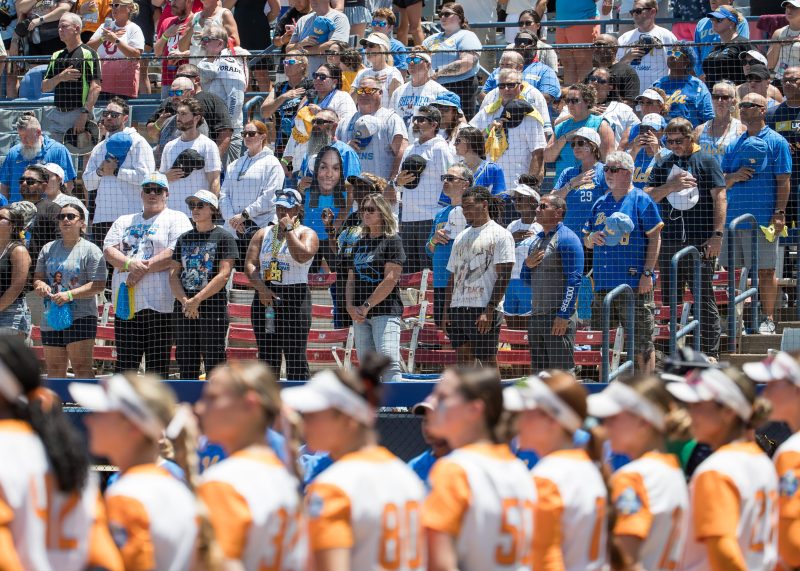
Controversy has taken the spotlight as the Women’s College World Series on June 1.
However, the celebration for UCLA quickly turned to worry.
After the home run, Grant was mobbed by teammates at home plate to celebrate the home run. When Grant took her final step to home plate, she missed the plate and was touched by teammates. Eventually, catcher Alexis Ramirez assisted Grant to touch home plate.
Following a lengthy umpire review, the officials ruled that while Grant did not initially touch home plate and was assisted to touch it afterwards, the run counted because ‘play is not reviewable according to Appendix G.’
Tennessee coach Karen Weekly quickly moved to file a protest and was heated following the review. However, the ABC broadcast following the inning break informed the audience that because the play was not reviewable, the Lady Vols could not protest.
But why did the run count? Here’s what you need to know:
Why did Karen Grant’s run count?
Replays quickly showed that Grant did not touch home plate right away and received assistance from her teammate Ramirez, who was the on-deck hitter, to touch the plate.
If the umpires had seen Grant missing home plate and receiving assistance from Ramirez, they could have ruled her out. If Grant had been ruled out, it would have ended the game with a Lady Vols 4-3 win, as Grant’s run would not have counted and the play happened with two outs in the inning.
With this being an elimination game with the winner going to the WCWS semifinals and the loser heading home, the stakes on the call could not be bigger.
According to Appendix G, this is what is reviewable:
- 1. Regarding batted balls (any ball higher than the top of the foul pole when itleaves the field cannot have that aspect reviewed):
- a. Deciding if a batted ball called fair is fair or foul.
- b. Deciding if a batted ball called foul should be a ground-rule double,home run, or hit-by-pitch.
- c. Deciding if a batted ball is or is not a home run.
- 2. Regarding pitched balls at the plate:
- a. Deciding if a pitch ruled a dropped third strike was caught before the balltouched the ground.
- b. Deciding whether a live or dead ball should be changed to a foul ball.c. Deciding whether a foul ball should be changed to a foul tip only with nobase runners, or if it would result in a third out.
- d. Deciding whether a batter is entitled to an award of first base per HitBatter (by Pitch) – whether the ball hit the batter, whether the ball wasentirely in the batter’s box, whether the batter made an attempt to getout of the way of the pitch when required, and/or whether the batterintentionally tried to get hit by the pitch (see Rule 11.13).
- 3. Spectator interference.
- 4. Obstruction and interference (including collisions).
- 5. Deciding if malicious/flagrant contact occurred. Umpires may initiate thisreview without requiring a coach’s challenge at any point in the game toensure student-athlete safety.
- 6. Timing plays (deciding whether a third out is made before the lead baserunner touches home plate).
- 7. Force/Tag Play Calls: Plays involving all runners acquiring the base beforethe defensive player’s attempt to put the runner out at any base.
- 8. Blocked or dead ball/Placement of Runners: Deciding whether a ball notruled blocked should be ruled blocked, and the proper placement of runners(per the rules/case book) after any blocked or dead ball call.
- 9. A catch or no catch in any situation.
- 10. Runners leaving the base prior to the touch on a fly ball (tagging up), runners missing a base and runners leaving early on a pitch.
- Note: The crew chief may not initiate a review of runners leaving early on a pitch. This review is only allowed by a coach’s challenge.
- 11. Any of the listed reviewable items if the action on the field results in a deadball.
